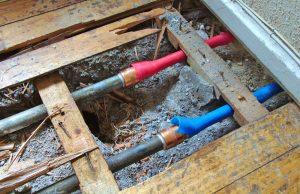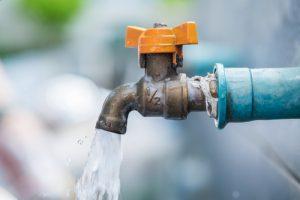Is your drinking water safe?
Are you sure there is no lead in the water you drink?
Should you even use lead pipes in your home?
Even if your municipal water supply is uncontaminated by lead, your home’s plumbing pipes and fixtures may be exposing you and your family to the serious health risks it causes. The Environmental Protection Agency (EPA) sets the maximum limit for lead in water at 15 parts per billion. However, there is no safe level of lead exposure – especially for pregnant women and children. According to the Centers for Disease Control and Prevention (CDC), even at low levels, lead has been shown to affect IQ, ability to pay attention and academic achievement. Making lead an even more insidious threat is its difficulty in being detected, as you cannot taste, smell or see it. Here’s what you need to do to check for lead, and how to mitigate should your plumbing be the source.

So how can you tell if your home has lead pipes? Mark Brush of Michigan Radio’s Environment Report recently put his home to the test and compiled this guide: “Here’s How To Tell If You Have Lead Pipes in Your Home” for checking where lead might be lurking in your home. While most Florida homes lack a basement, his advice applies where applicable.
First, look for the water service line, which should be at the lowest point of the house – probably nearest to the road and close to the floor. A pipe that’s a dark matte gray color is a good indication of lead. To confirm, scrap the service line with a screwdriver. If it’s lead, the metal will be soft and turn very shiny.

Or, your town might still have lead service – or header – lines in place from the water main to the street. Start by calling your water supplier. Go to your local government’s website and then to the page for its water and sewage department to find contact information. The department should be able to find records for your home’s header pipe.
You can also have your water tested, although if it tests positive for lead, there is no way to tell whether the contamination originates with your plumbing or the water supply. You can find a lab certified by the Department of Environmental Protection (DEP) and get your tap water tested for lead. Visit the EPA website and find a certified lab near your home. The non-profit organization Because Water offers additional water testing options, including:
- Buy a home test kit; follow instructions for collecting and testing a sample (downside – there is no lab report or specific details).
- Have your water tested by a water filtration company (downside – they will try to sell you their service).
- Have your water tested by your local water supplier.
Of course, you can contact a reliable full-service plumbing company to conduct an inspection for lead pipes and lead solder. Adams and Son Plumbing has 60 years of experience in delivering plumbing excellence for residential and commercial customers throughout Central Florida. Contact us for the peace of mind you need to enjoy the safe drinking water you depend upon.

